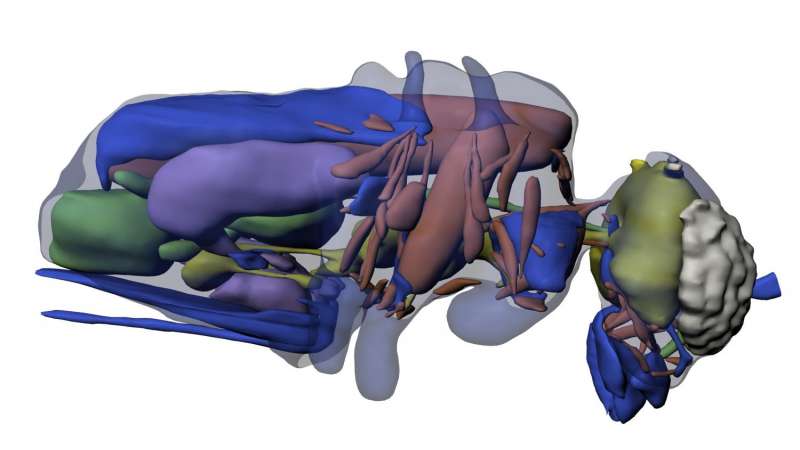How evolutionary miniaturization in insects influences their organs

Scientists from the Faculty of Biology of the Lomonosov Moscow State University have studied how the organs of microinsects change sizes in the process of evolution. Looking ahead, principles and regularities of miniaturization in animals could be applied in biotechnology and robotization. The researchers have presented their project in Scientific reports.
Biologist Alexey Polilov, the article author, says, "The project idea was to estimate how different insect organs react to body size changes. We focused on miniaturization—namely, evolutionary reduction to extremely small sizes. We wanted to find out what happens to the structure of organs when insect body sizes decrease from one centimeter up to tenths of a millimeter. This is necessary to understand what remains the same and what changes in an insect body."
Miniaturization, or reduction in body size, appears to be one of the main tendencies of insect evolution, as a result of which they can become the size of unicellular organisms. Among the smallest insects are Coleoptera and Hymenoptera, Mymaridae. They are fractions of a millimeter, and it's very difficult to see them with the unaided eye. These insects emerged hundreds of millions years ago, and they have been evolving all this time up to present day.
Microinsects are abundant, found in cities, in parks, mountains and forests. But the greatest populations are in low latitudes and the tropics. Their wings are not blade-like, as are the wings of dragonflies, but feather-like, consisting of a vein with bristles along the edges.
The biologists analyzed a vast amount of data obtained over the last 10 years. They created 30 complete and 26 partial 3-D computer reconstructions for 22 insect species of 11 families¸ belonging to five orders (Thysanura, Psocoptera, Thysanoptera, Coleoptera, and Hymenoptera). They studied insects of various sizes—their body volumes differed by a factor of more than 150,000. On the basis on these models, the biologists have analyzed relative volumes of insect organs.
Alexey Polilov says, "We've revealed the fact that the majority insect organ systems demonstrate great opportunities for scaling—they constrain constant proportions by multiple changes of body sizes. Organ systems maintain their structure ,and some of them even maintain constant relative volume, despite multiple reductions in sizes."
The scientists discovered that metabolic systems,internal tissues and tracheal systems decrease proportionally to the reduction in body sizes, even in the smallest insects. By contrast, reproductive and nervous systems demonstrate multiple increases in relative volume, even as the body sizes decrease.
The scientist says, "It seems that these very systems limit minimal body sizes in insects. Our results, compared with scientific literature on vertebrate animals, show that at the same allometry scales, most organs in vertebrates change non-proportionally. So we've shown that insect structure is better adapted to scaling, and especially to reduction in body sizes."
More information: Alexey A. Polilov et al, The scaling and allometry of organ size associated with miniaturization in insects: A case study for Coleoptera and Hymenoptera, Scientific Reports (2017). DOI: 10.1038/srep43095
Journal information: Scientific Reports
Provided by Lomonosov Moscow State University




















